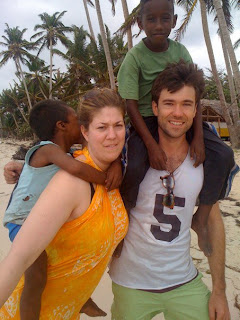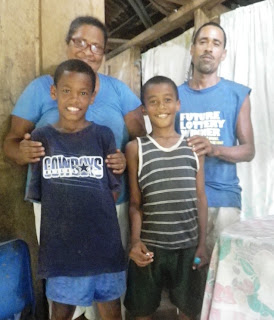By Angela Cacciola -- For James Richards the transition from blueEnergy human resources volunteer to entrepreneur “was not a difficult one. I had the idea of going into business long before I ever came to blueEnergy, but blueEnergy gave me the experience, the alternative energy, and the comfort level for what I wanted to do.” Since he is not an engineer by trade, at blueEnergy James tried to get into the workshop and go out on installations as much as possible, “to get my feet wet in the renewable sector.”
One year after returning to the United States and making a trip to China to learn more and determine how to get the solar water heater systems made, James launched
The Sunbank from his home in West Virginia in June and July 2011. A rooftop unit, The Sunbank System, “uses evacuated tube solar collectors to absorb between 92-96% of the solar radiation that strikes them.” These solar collectors heat the water in a super-insulated tank, where the hot water is stored until it is used.
One of James’ fondest memories at blueEnergy was building the solar water heater which launched the platform for The Sunbank. “Taking the technology from idea stage to hot showers was rewarding… especially in Bluefields,” which lacks a consistent municipal water system.
Fellow blueEnergy volunteer, Esteban Van Dam, who since working with blueEnergy has started his own NGO in Argentina, was one of the many engineers and individuals good with tools who liked to tinker with ideas. Together, while contemplating solar hot water business idea, the two decided to build a prototype solar water heater for those volunteers craving the luxury of a hot shower.
James and his fellow volunteers, “put together a design and after debating it for a week,” and built a thermosiphon water heater just over the front porch and plumbed it to the shower. In fact, they also built a baby pool, or “sauna,” in the yard behind the house. The heater was “really effective and put out so much hot water that it melted a piece of plastic.”
 |
| Solar water heater built by James at blueEnergy. |
At blueEnergy, James also enjoyed the “community feeling that blueEnergy had,” which he got from interacting with the house kitchen mammas and also from “going up to the main house every night and cooking dinner together for whoever was there” he said. “There was such a diverse crew from all over the world …everybody kind of melds together and it’s a good bunch of people and no exception when I was there.”
Similar to many volunteers, James loved the daily interaction with the blueEnergy house kitchen mammas. When one mamma’s son had an illness, “We were really worried he was going to die because the doctors couldn’t figure out what was wrong with him.” After James did a little research on the internet, and was able to figure out what the sickness was, he printed it out in Spanish and English. “We took it to the doctor and he was like, ‘yeah, this is correct,’ and after that her son was able to get treatment.”
Right now, James has been working with mostly local businesses, but the company is capable of shipping the product anywhere in the country. In China, solar water heating is very established. In the United States, it is still a very new idea. In 2012, James hopes to focus on education, marketing and picking up sales, “to have an increased impact” and eventually, “become a national brand."
 |
| James (R) and his sister in Corn Island, Nicaragua |













